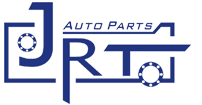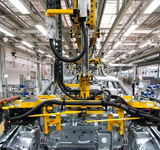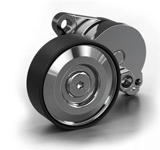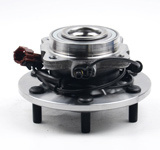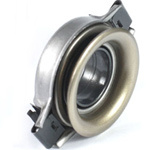How a Concentric Slave Cylinder Enhances Clutch Performance: An In-Depth Analysis
Release time:
Dec 23,2024
How a Concentric Slave Cylinder Enhances Clutch Performance
Table of Contents
1. Understanding Concentric Slave Cylinders
2. The Importance of Clutch Performance in Vehicles
3. How Concentric Slave Cylinders Work
3.1 Design and Configuration
3.2 Hydraulic System Integration
4. Advantages of Using Concentric Slave Cylinders
4.1 Improved Clutch Engagement
4.2 Space-Saving Design
4.3 Increased Reliability
5. Common Issues with Concentric Slave Cylinders
5.1 Signs of Wear and Tear
5.2 Troubleshooting Tips
6. Maintenance Best Practices
6.1 Regular Inspections
6.2 Bleeding the Hydraulic System
7. Future Trends in Clutch Technology
8. Conclusion
FAQs
1. Understanding Concentric Slave Cylinders
Concentric slave cylinders (CSCs) are crucial components in modern hydraulic clutch systems. They function as a link between the clutch pedal and the clutch assembly, playing a pivotal role in the operation of manual and semi-automatic transmissions. By utilizing hydraulic pressure, these cylinders facilitate smooth clutch engagement and disengagement, allowing drivers to shift gears effortlessly.
2. The Importance of Clutch Performance in Vehicles
Clutch performance is vital for the overall functionality and drivability of any vehicle equipped with a manual or semi-automatic transmission. A well-functioning clutch ensures that the engine can disengage from the transmission, enabling smooth gear shifts and preventing engine stalling. Understanding how components like the concentric slave cylinder contribute to clutch performance is essential for anyone interested in automotive mechanics.
3. How Concentric Slave Cylinders Work
3.1 Design and Configuration
The design of a concentric slave cylinder is unique and efficient. It is positioned concentrically around the gearbox input shaft, resulting in a compact assembly that saves space. This design allows for a shorter hydraulic line, minimizing potential leaks and boosting reliability.
3.2 Hydraulic System Integration
A concentric slave cylinder operates within a hydraulic system, utilizing fluid pressure to engage and disengage the clutch. When the driver presses the clutch pedal, hydraulic fluid is transmitted to the slave cylinder, which then pushes the release bearing against the clutch diaphragm spring. This action separates the clutch plates, allowing for smooth gear transitions.
4. Advantages of Using Concentric Slave Cylinders
The adoption of concentric slave cylinders in vehicle design brings several notable advantages.
4.1 Improved Clutch Engagement
One significant benefit of using a concentric slave cylinder is improved clutch engagement. The direct application of hydraulic pressure allows for more precise control, resulting in smoother transitions between gears. This enhanced engagement is particularly beneficial in high-performance and racing vehicles, where every millisecond counts.
4.2 Space-Saving Design
Another advantage is their compact design, which saves valuable space in the engine bay. This space efficiency is especially important in modern vehicles, where every inch is optimized for performance and weight reduction. The concentric design minimizes the complexity of the clutch assembly, making it easier for manufacturers to integrate into various vehicle models.
4.3 Increased Reliability
Concentric slave cylinders tend to offer increased reliability compared to traditional external slave cylinders. Since they are less exposed to environmental factors, such as dirt and debris, they are less likely to succumb to wear and tear. This durability translates into lower maintenance costs and longer service intervals, benefiting vehicle owners in the long run.
5. Common Issues with Concentric Slave Cylinders
Despite their advantages, concentric slave cylinders are not immune to issues. Understanding common problems can help vehicle owners take proactive measures.
5.1 Signs of Wear and Tear
Some signs that a concentric slave cylinder may be experiencing issues include difficulty in shifting gears, a spongy or unresponsive clutch pedal, and fluid leaks around the housing. If these symptoms arise, it's essential to have the system inspected promptly to avoid further damage.
5.2 Troubleshooting Tips
If you notice any of the above symptoms, check your vehicle's hydraulic fluid levels first. Low fluid can lead to inadequate pressure, causing performance issues. Additionally, inspect the hydraulic lines and connections for leaks or damage. If problems persist, seeking professional assistance is advisable to ensure timely repairs.
6. Maintenance Best Practices
Regular maintenance can extend the lifespan and performance of concentric slave cylinders.
6.1 Regular Inspections
Conducting routine inspections of the clutch system can help identify potential issues early. Check for signs of leakage, corrosion, and wear on the hydraulic lines and cylinder itself. By addressing problems before they escalate, you can maintain optimal clutch performance.
6.2 Bleeding the Hydraulic System
Bleeding the hydraulic system is crucial for removing air bubbles that can cause clutch disengagement issues. Regular bleeding is recommended, especially after replacing any components within the hydraulic system. Follow the manufacturer’s guidelines for the correct bleeding procedure to ensure proper function.
7. Future Trends in Clutch Technology
As automotive technology continues to evolve, the design and functionality of clutch systems are also advancing. Innovations such as electronic control systems and enhanced materials for slave cylinders are emerging, promising even greater reliability, efficiency, and performance. Future vehicles may incorporate advanced sensors to monitor clutch functionality in real-time, further enhancing driver experience.
8. Conclusion
In conclusion, **concentric slave cylinders play a vital role in enhancing clutch performance** in modern vehicles. Their efficient design, improved engagement capabilities, and increased reliability make them a preferred choice in many automotive applications. By understanding how these components work, their advantages, and how to maintain them, vehicle owners can ensure optimal performance and longevity of their clutch systems. For those looking to enhance their vehicle's driving experience, investing time in the care of concentric slave cylinders is a step in the right direction.
FAQs
1. What is a concentric slave cylinder?
A concentric slave cylinder is a hydraulic component that operates the clutch in manual and semi-automatic transmissions. It is positioned around the gearbox input shaft and functions to engage and disengage the clutch smoothly.
2. How does a concentric slave cylinder improve clutch performance?
It improves clutch performance by providing precise hydraulic control, resulting in smoother gear shifts and enhanced engagement compared to traditional systems.
3. What are the common signs of a failing concentric slave cylinder?
Common signs include difficulty shifting gears, a spongy clutch pedal, and fluid leaks around the cylinder.
4. How can I maintain my concentric slave cylinder?
Regular inspections, fluid level checks, and bleeding the hydraulic system are essential maintenance practices to ensure optimal performance.
5. Are concentric slave cylinders more reliable than traditional slave cylinders?
Yes, their design reduces exposure to environmental elements, leading to increased reliability and lower maintenance costs over time.





